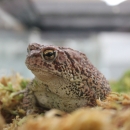The Texas Coastal and Central Plains Ecological Services Field Office focuses on Federal project and infrastructure review; threatened and endangered species listing, recovery, consultation, and permits; Natural Resource Damage and Assessment; Partners for Fish and Wildlife; and Gulf Restoration and Coastal Programs. Our mission is to conserve, protect, and enhance fish, wildlife, and plants and their habitats for the continuing benefit of the American people.
Our Organization
Our Species
The Texas Coastal and Central Plains Ecological Services Field Office works to prevent the extinction of our nation’s most imperiled species by recovering existing populations. Our efforts are focused on many species, including the whooping crane, migratory bird species, piping plover, red knot, Texas trailing phlox, South Texas ambrosia, Texas golden gladecress, Northern Aplomado Falcon, monarch butterfly, Houston Toad, and the Kemp’s Ridley sea turtle, ocelot, freshwater mussels, and more.
Get Involved
Our field office takes advantage of programs that the Fish and Wildlife Service offers through our volunteer program, Directorate Fellowship Program, Pathways Program, and more. Get in touch with our field office to see how you can get involved!











